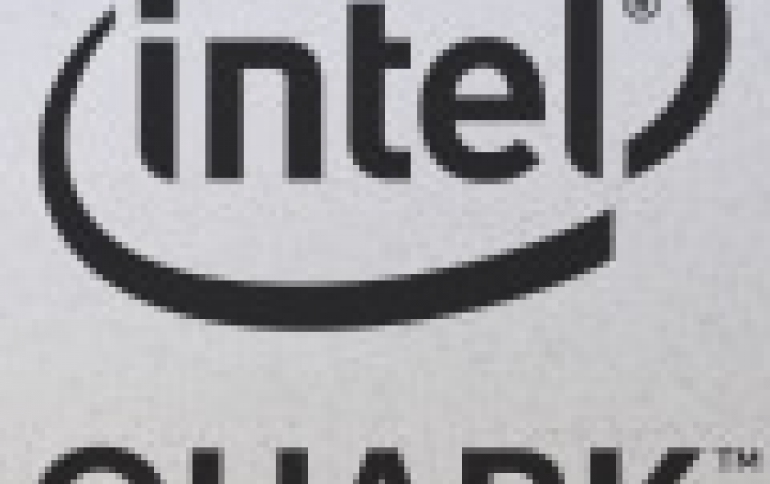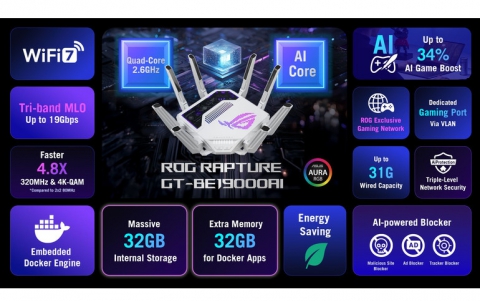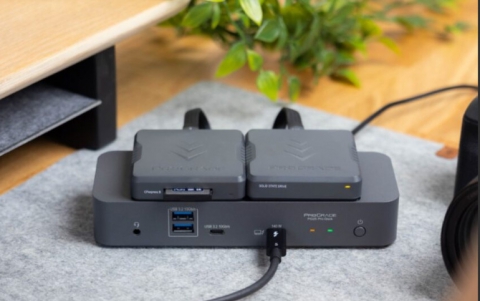
Intel Unveils New IoT Platform
Intel today announced a new Intel IoT Platform reference architecture and new hardware and software products as part of its effort to build out a comprehensive offerings for the Internet of Things (IoT) marketplace. The platform includes two reference architectures and a portfolio of products from Intel and its ecosystem. The products include new Intel Quark processors for IoT, free operating systems with a cloud suite from Wind River, and analytics capabilities.
Intel is working with a variety of companies across market segments to scale from a proof of concept to pilot to deployments. Levi Strauss & Co. collaborated with Intel and implemented a proof of concept for the Intel IoT Platform to address inventory management in three of its stores. The proof of concept allows the Levi's stores to gain visibility into what's on the shelf or what might be running low.
The new Intel IoT Platform reference architecture for smart and connected things is focused on enabling the broad Intel ecosystem to develop, secure and integrate smart things. The first company to announce IoT solutions based on the new Intel IoT Platform is SAP, which will develop its IoT enterprise end-to-end solutions utilizing the Intel platform along with its SAP HANA Cloud Platform.
Intel's addition of Intel Quark processors for IoT provides low-power silicon for intelligent things. The Intel Quark SE SoC and the Intel Quark microcontroller D1000 and D2000 feature powerful processing in an energy-conscious envelope. They also feature a full Intel x86 instruction set architecture for compatibility and scalability.
The Intel Quark processors for IoT feature security to protect against malicious intrusions that could compromise networks.
The new products are offering extended temperature for demanding environments and have long life reliability. The Intel Quark SE SoC for IoT offers an integrated sensor hub as well as pattern matching technology to deliver real-time insights from complex sensor data.
To collect data on everything from space utilization to lighting usage in an office building, Yanzi, a smart building provider, is using the new Intel Quark SoC to develop the Yanzi Plug* and Yanzi Motion. The plug is an energy monitoring sensor that enables optimized energy use based on space utilization and predictive maintenance in smart buildings, in addition to providing analytics at the edge and in the "thing." The solution results in decreased operating expenses and total cost of ownership of IoT systems in smart buildings.
Honeywell demonstrated a prototype of its connected worker solution featuring Intel Quark technology. The industrial wearable helps monitor the environments of mission-critical workers like first responders, industrial workers and firefighters. It demonstrates how the integration of data from multiple workers can anticipate unsafe conditions and prevent potential "man-down" scenarios or equipment failures that could threaten worker safety and cause costly downtime.
The Intel Quark microcontroller D1000 is available today, while the Intel Quark microcontroller D2000 will be available by the end of this year. The Intel Quark SE SoC for IoT will be available in the first half of 2016.
The new offering from Intel's Wind River is designed to help makers and commercial developers simplify IoT application and device development, with the ability to start building applications in 10 minutes. A critical part of the Intel IoT Platform, it includes free cloud-connected multi-architecture operating systems, Wind River Rocket and Wind River Pulsar Linux, and a cloud suite of software-as-a-service (SaaS) products.

With its latest offering, Wind River not only grows its presence in the cloud, but further extends its OS footprint to MCUs.
Wind River Helix Cloud SaaS products now available include:
- Wind River Helix App Cloud is a cloud-based development environment for building IoT applications.
- Wind River Helix Lab Cloud is a cloud-based virtual hardware lab for simulating and testing IoT devices and complex systems.
- Wind River Helix Device Cloud is a cloud-based platform for managing deployed IoT devices and their data.
Based on Wind River OS technology, the following free cloud-connected operating systems are now available:
- Wind River Rocket is a tiny-footprint commercial-grade quality real-time operating system that is directly connected to Wind River Helix Cloud. It offers multi-architecture support, and is designed for applications running on 32-bit MCUs such as those used in small-footprint sensor hubs, wearables, and devices comprising the IoT edge.
- Wind River Pulsar Linux is a small-footprint commercial-grade quality binary Linux OS based on the Wind River Linux distribution that is directly connected to Wind River Helix Cloud. It offers multi-architecture support, and is designed to run on applications scaling from 32-bit MCUs to 64-bit CPUs.
- Wind River Rocket and Wind River Pulsar Linux are platform-independent, and in addition to support for Intel and ARM architectures, will support a range of mainstream commercial boards.
A key ingredient to the new Intel IoT Platform is the Trusted Analytics Platform (TAP), which helps make data actionable and can be integrated in an end-to-end IoT solution. Designed for developers and data scientists, TAP is a platform for a range of industries such as healthcare, retail and industrial. It integrates with the Intel IoT Platform reference architecture for data management, protocol abstraction, workload distribution and compute.






















